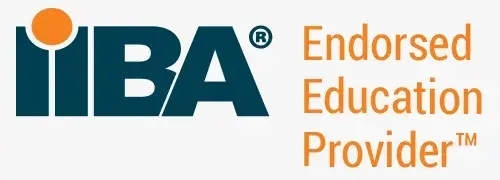Stakeholder Management is well-known as one of the most important parts of Project Management. The success or failure of a Project
is highly dependent on its Stakeholders. As a result, properly managing Stakeholders and keeping them happy is a
challenge for most Project Managers.
If you are wondering who a stakeholder is and what they do, then to state it simply, a
Stakeholder is an individual who has an
interest in the success of a Project and hence sponsors or makes an investment in the said Project. However, it is sometimes a
bit challenging for Project Managers to handle or deal with Stakeholders. As a result, it’s critical to learn how to do so efficiently.
In this guide, we will define Stakeholders, explore how to deal with Problematic Stakeholders, and
provide tips on how to keep a positive relationship with them for a fruitful collaboration.
What is Stakeholder Management?
The practice of coordinating, monitoring, and sustaining connections with Project Stakeholders is known as
Stakeholder Management. Any individual who is impacted by your Project has influence and authority over it, or
has an interest in its success is referred to as a Stakeholder.
So, we can say that Stakeholder Management is the process of managing these Stakeholders' expectations and requirements.
It entails identifying and assessing stakeholders, as well as developing a systematic approach for communicating and engaging with them.
How to handle Challenging Stakeholders?
To know how to deal with challenging stakeholders we need to understand two things first: Who are the
Stakeholders and What their interests in. One can identify n number of Stakeholders who are related
directly or indirectly to the Project. They can be:
Your boss, Senior executives, Your co-workers, Your team, Customers, Prospective customers, Your family, Shareholders, Alliance
partners, Suppliers, Lenders, Analysts, Future recruits, Key contributors, Government, Trades associations, Media, Interest groups,
Public, The community, Key advisers and so many.
Stakeholders can be both organizations and people. Either case you need to communicate and interact with people. So, it
is really important to realize who is your correct Stakeholder.
Studies show there are 5 important Stakeholders for a Project. We have summarised them as:
- Project Manager
- Project Team
- Functional Management
- Sponsors
- Customers
You can classify them as internal or external depending upon their direct interest
in the Project.
A Project Manager may face a lot of difficulties when dealing with a Challenging Stakeholder such as
lack of Stakeholder engagement, lack of communication, receiving only critical feedback, receiving Project briefs at the last moment, and
many others. It can be quite overwhelming for a Project Manager to mentally deal with a Challenging Stakeholder.
Signs that shows Stakeholders can become difficult
There could be several factors that make the interaction with the Stakeholders challenging. It can be due to environmental
factors like unknown Stakeholders, or role vs Project pressure. Or it can be due to behavioral factors, i.e.
lack of proper communication and/or trust. Or sometimes it is due to the person’s attitude too.
And again, these can occur due to multiple reasons. Maybe the Stakeholders are traveling a lot, and hence not able
to give proper time and interest in the Project. Or maybe different meetings are consuming a significant amount of time.
Or the Stakeholder is far too demanding, they want some of the other changes in your delivered tasks. Or they have a clash
of interests with you. Or maybe a lot of other processes are in pipeline and they are again not getting sufficient time to focus upon.
Whatever the reason, a devised strategy will always be helpful to deal with tough Stakeholders. Here are some signs
that you might be dealing with a Difficult or Challenging Stakeholder.
1. Lack of communication
Capturing Stakeholders' expectations and Project goals is one of the most important components of managing Stakeholders. With that
in mind, Stakeholders who don’t return calls or respond to emails on time aren’t helping you out. This lack of communication might
also be interpreted as a lack of enthusiasm for the Project as a whole and can indicate that you are dealing with a Difficult
Stakeholder.
2. They don't share the same feeling of urgency
From beginning to end, every one of your Stakeholders should feel the same sense of urgency. If your Stakeholders appear to be
putting the brakes on your Project or providing delayed feedback, this could indicate that they no longer feel a sense of urgency
and this could largely affect the overall project.
3. You only receive negative remarks
Do your Stakeholders solely offer negative feedback when they express an opinion? Constructive
criticism never hurt anyone, but if your Stakeholder only shares negative remarks and feedback, then this is a sign
that you are dealing with a Difficult Stakeholder.
Best strategies to deal with Difficult Stakeholders
We have put together a few strategies here to help you deal with Challenging Stakeholders who unknowingly may affect
the Project’s success or may even impact your performance. Therefore, with the help of these strategies, you can learn how
to deal with your Difficult Stakeholders while keeping calm.
Identify the Stakeholder
Try to figure out what kind of a person is this Stakeholder. Is he/she process-oriented, data-oriented, or
result-oriented? In fewer interactions, you’ll get to know what level of detailed updates he/she requires.
Communication: Using the right words and knowing where and how to use them
Many Stakeholders don’t want to be bombarded with overwhelming communications. Check for those emails, chats, and
messages, are they really necessary to be sent out to them? Check on your communications to ensure you are not
sending too many open-ended questions. Try to club all the questions together with proper analysis. Organize
the questions then send out the email.
In case you feel not comfortable with the situation keep a check on your Self Control: Do not deal with issues when you are upset
or feel like you are losing control. Reschedule the meetings. Postpone sending out any kind of communication.
Initiate one-on-one meetings with your stakeholder
Make time to meet with each Challenging Stakeholder separately. Ask open-ended inquiries about their thoughts
and how the Project is moving rather. Moreover, Stakeholder Management on a one-on-one basis also avoids
negative opinions from influencing others on the project. Therefore, one way to deal with Challenging
Stakeholders is to initiate a one-on-one meeting with them.
Maintain your calm
You must remove emotion from the equation when dealing with challenging stakeholders. Maintaining a professional
demeanor and placing your Project’s goals and objectives in front will help you see things more clearly. You’ll
be more willing to understand the other person’s point of view and work out a solution.
Accepting their authority
Psychology says there is a fine line between being authoritative and being egoistic. One should understand and accept
the authority of the Stakeholder. Many times a Stakeholder needs to put their foot down to make a decision.
But this does not mean that the Stakeholder is negative. Do not take things personally.
Being honest
Everyone respects honesty. Be clear with your Project status. Don’t hide anything. Let the concerned
people know the issues if you have any. Do not manipulate stuff.
Building trust
It is not simple to build trust, but neither it is difficult. This will help in developing rapport with the
Stakeholder. Being a Business Analyst, you are influential. Use this potential to interact with the Stakeholders. If
they want formal meetings, set them. If they are okay with informal ones, it is okay. Ensure you both are
professional and do not cross the organization’s limits.
Interest and power
As the old saying goes ‘prevention is better than cure’. If you can keep the stakeholders engage as per their
interests, it will work wonders for the project.
Behavioral science is quite subjective. And dealing with Challenging Stakeholders can be subjective too. In
one of the studies Mendelow, A.L. has come up with a simple representation of Stakeholders' power (as in the
authority) and their way of scanning the environment. Researchers have further simplified this in terms
of power and interest. as this:
Now let us see which Stakeholder to focus on depending upon their power and interest in the Project.
- High power, highly interested people (Manage Closely): These are the people you should always satisfy. The stake of the
Project depends mainly upon them. A Project Manager could be one of them. Update them with minute details of the Project progress.
Set up regular meetings with them. Get their feedback on the Project’s interest. Few of the high-profile Stakeholders like
the VP, and Director also fall under this category. Although you should never over-communicate but always be ready to send the
summary of data, analysis, and so on. You can ask them what further details they would need from you.
- High power, less interested people (Keep Satisfied): These kinds of people should be satisfied. but they might not want
to be bombarded with your detailed communications. These are the ones who don’t want too many details. They want crisp updates
of progress. Business Managers or many high-profile Stakeholders and Sponsors are one of them.
- Low power, highly interested people (Keep Informed): People who are interested in the Project execution even though not
directly related to the Project, maybe because the Project was initially their brainchild, or maybe the technology involved in
the Project keeps them interested. You can keep these Stakeholders in the loop for all the progress. But don’t bother
too much for them. as you might get too little from them for the effort and time you would have put in.
- Low power, less interested people (Monitor): Keep monitoring these people. Again, don’t bother much with these Stakeholders.
Keep your team moving forward
Listen to your Stakeholders and make every effort to accommodate their requirements, no matter how challenging it
may be. Assuring that they are heard, valued, and appreciated helps to build trust and support. When everyone
is on board and on the same page, Projects are more successful.



